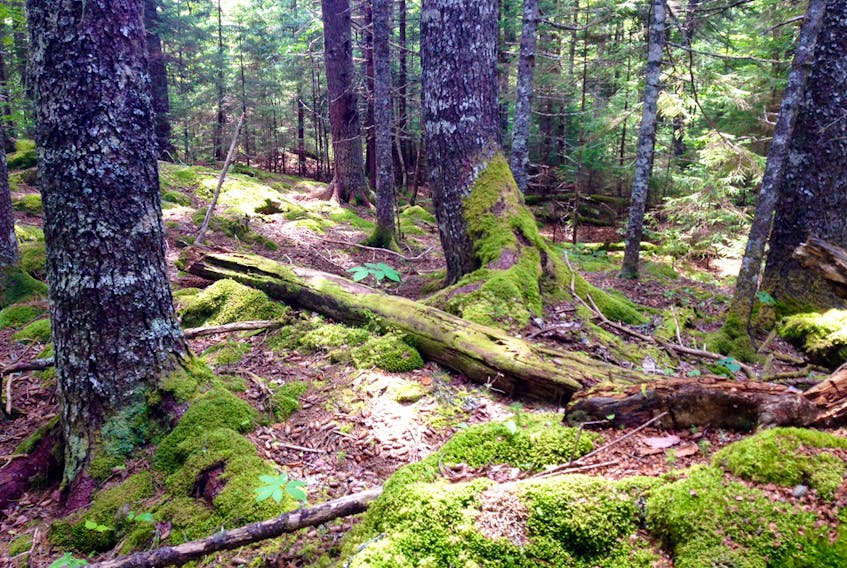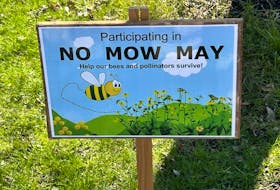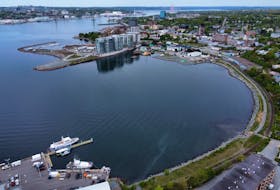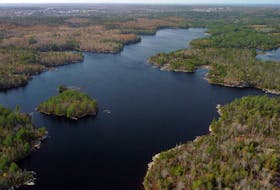JOSH NOSEWORTHY
The burning of the Brazilian rainforest is a wake-up call: when the planet’s largest tropical rainforest is on fire, there are global implications in an era of climate change and biodiversity loss. The Amazon not only produces oxygen and stores vast amounts of carbon, it is also home to the greatest diversity of plants and animals on Earth.
But the destruction in the Amazon is only the latest chapter in the story of global deforestation, an unfolding tragedy in which at least half of the world’s forests have been degraded or lost entirely.
You may be surprised to learn that forests in the Maritimes are no exception, and while we certainly do not suffer from a lack of trees, the forest we see around us is a radically altered version of the forests that once were.
The Maritimes’ native forest — called the Acadian forest — is one of the most diverse forests in Canada. The Acadian forest includes nearly 50 species of trees —a unique mix of warm-loving species from the south and cold-hardy species from the north. This creates a very ecologically rich forest that supports thousands of other species of plants and animals, and scientists are still discovering new ones!
Over the past 400 years, like many forests around the world, the Acadian forest has also experienced severe burning, unsustainable logging and conversion to agriculture. Sadly, less than five per cent of original Acadian forest remains, mainly restricted to small nature reserves and hard-to-reach areas like ravines.
Although we have lost much of the rich Acadian forest that once blanketed the Maritimes, in the last few decades we have learned a great deal about its ecology and how to restore it, and those lessons are available to everyone. The Nature Conservancy of Canada (NCC) has written the Acadian Forest Restoration Manual to support landowners throughout the Maritimes who would like to restore their land.
The basic principle involves bringing back the mix of long-lived Acadian tree species, including hemlock, yellow birch, cedar, sugar maple, red oak and white pine, and allowing them to grow old — hundreds of years old. Planting a diverse mix of native tree species is the best approach, and preferably those that are locally grown and adapted to the conditions in your area. On a larger scale, the restoration principles described in the manual can also be incorporated into any strategy that aims to conserve forest biodiversity on public lands.
Conserving and restoring the Acadian forest not only benefits wildlife, it benefits people, too. Mature, healthy, diverse forests protect and filter water supplies, reduce flooding and soil erosion, and provide areas for recreation, to enhance our health and well-being.
Forest restoration is also a big part of the climate solution. From Ethiopia to China to Scotland, people are restoring forests as an important way to store carbon. Climate change is predicted to have a large impact on the Acadian forest, but, as luck would have it, the long-lived tree species that we want to restore are the same ones that are predicted to do well in a warming climate. This makes Acadian forest restoration a win-win solution for both people and wildlife.
Conserving and restoring the Acadian forest isn’t just a nice idea; our future may very well depend on it.
Josh Noseworthy is the director of conservation science for the Nature Conservancy of Canada, Atlantic region and lead author of NCC’s Acadian Forest Restoration Manual. The Nature Conservancy of Canada (NCC) is the nation’s leading not-for-profit, private land conservation organization, working to protect our most important natural areas and the plants and animals they sustain. Since 1962, NCC and its partners have helped to protect 14 million hectares (35 million acres), coast to coast to coast. In Atlantic Canada, the Nature Conservancy of Canada has helped protect 31,000 hectares (77,000 acres). To learn more, visit natureconservancy.ca









